For the most accurate listings, including modes of instruction please visit BuckeyeLink or Classes.osu.edu.
Spring 2025 Course Offerings
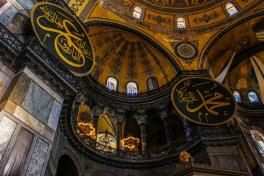
History of Art 2001 - Western Art I: Ancient and Medieval Worlds
Course Designer - Professor Karl Whittington, Instructor - Professor Kristen Adams
ONLINE | Full Semester | Class #26728 | ASYNCHRONOUS
Course Designer - Professor Karl Whittington, Instructor - TBD
ONLINE | 7 Weeks, Session 2 | Class #30652 | ASYCHRONOUS
Instructor Sarah Schellinger
IN PERSON | Full Semester | Class #36441| TUE & THUR 5:30-6:50
This course examines the history of Western Art (architecture, painting and sculpture) from the third millennium BCE through the fifteenth century CE. Rather than a complete “survey” of that period, the course will concentrate its attention on a select group of representative monuments. We will examine not only the monuments themselves, but also the historical context in which they were produced in order to explore their purpose and the way that they functioned. There will be a strong emphasis on visual analysis and understanding how visual forms convey meaning and relate to the viewer. Our goal is to impart not only a body of knowledge but also a set of critical tools, which you should be able to apply to even material not specifically covered in this course.
Image: Hagia Sophia
GEN foundations: Literary, Visual and Performing Arts (LVPA) and Historical and Cultural Studies

History of Art 2001 Honors - Western Art I: Ancient and Medieval Worlds
Professor Kristen Adams
IN PERSON | Class #28933 | MON & WED 9:35-10:55
This course examines the history of Western Art (architecture, painting and sculpture) from the third millennium BCE through the fifteenth century CE. Rather than a complete “survey” of that period, the course will concentrate its attention on a select group of representative monuments. We will examine not only the monuments themselves, but also the historical context in which they were produced in order to explore their purpose and the way that they functioned. There will be a strong emphasis on visual analysis and understanding how visual forms convey meaning and relate to the viewer. Our goal is to impart not only a body of knowledge but also a set of critical tools, which you should be able to apply to even material not specifically covered in this course.
Image: Book of Kells
GEN foundations: Literary, Visual and Performing Arts (LVPA) and Historical and Cultural Studies
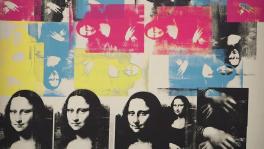
History of Art 2002 - Western Art II: Renaissance to Modern
Course Designer - Professor Jody Patterson, Instructor - TBD
ONLINE | Class #19901 | ASYNCHRONOUS
Instructor - TBD
IN PERSON | Class #28437 | TUE & THUR 5:30-6:50
This course examines the art of Europe and the United States from about 1400 to the present, with an emphasis on developments in painting. Rather than a traditional survey of that period, the course will concentrate on a select group of representative works that shaped—and were shaped by — Western social, political, economic, and intellectual history. There will be a strong emphasis, too, on questions of analysis and interpretation —including, in some cases, the changing history of the artworks’ reception. The goal will be to impart not only a body of knowledge but also a set of critical tools, including visual literacy, that students will be able to apply to a wide range of material not specifically covered in the course.
GEN Foundations: Literary, Visual and Performing Arts (LVPA) and Historical and Cultural Studies
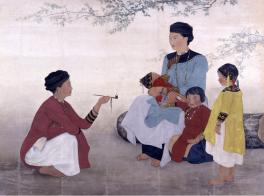
History of Art 2003 - The Art & Visual Culture of East Asia
Professor Christina Mathison
IN PERSON |Class #19902 | LECTURE - MON & WED 11:30-12:25 | +RECITATION - FRI 10:20-11:15 OR 11:30-12:25
This course offers an introduction to the visual arts in East Asia, from the Neolithic through today. The course examines in particular the relationship between cultural production and changing notions of authority in East Asia in a comparative historical perspective. Case studies will be drawn from China, Korea, Japan, and neighboring regions. Issues examined include: religion and early state formation; courtly culture and monumentality; the development of urban popular culture; the age of empire; art and modernization.
GEN Foundations: Literary, Visual and Performing Arts (LVPA) and Historical and Cultural Studies

History of Art 2007 - Buddha to Bollywood: The Arts of India
Professor Ujaan Ghosh
IN PERSON | Class #37103| TUE & THUR 2:20-3:40
This course is designed to offer students a comprehensive overview of the diverse visual cultures of South Asia. We will delve into a broad range of topics, including architecture, sculpture and painting, performative traditions, and film. Through lectures, discussions, and assignments, we will develop a critical vocabulary to better understand and interrogate the rich visual heritage of the Indian subcontinent. Our focus will be on exploring the various ways in which visual culture has been utilized as a modality to express political power, gender roles, ethnic and racial identity, diverse religious beliefs, and social aspirations. Further, the course steers attention to questions of gender and identity in the South Asian context as they are expressed through artistic practice. Additionally, we will take a closer look at some of the foundational pedagogical debates and conversations surrounding South Asian Art. By the conclusion of the course, students will have a comprehensive understanding of the diverse artistic traditions as they are practiced in South Asia, and an appreciation for art’s intersection with complex issues of race, ethnicity, gender, and politics.
GEN foundations: Literary, Visual and Performing Arts (LVPA)
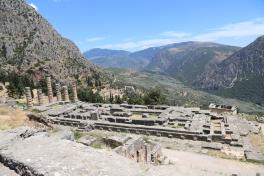
History of Art 2301 - Classical Archaeology
Professor Mark Fullerton
ONLINE | Class #30175 | ASYNCHRONOUS
HA2301 is concerned with the study of the Classical past through its material remains. The term “Classical” here refers to the Greek and Roman cultures of the Mediterranean world beginning with the palace civilizations of the Aegean Bronze Age and extending through the third century of the Roman Empire (c.2000 BCE-300 CE). The objective of the course is to familiarize the student with the history of the discipline, the techniques of archaeological fieldwork, and the major archaeological discoveries and controversies of the past two centuries.
Additionally, as a History of Art course, HA 2301 places a strong emphasis on the study of the major arts of antiquity, especially architecture, sculpture, and painting. Indeed, the study of ancient Greek and Roman art has for centuries been embedded within the field of Classical Archaeology, for reasons that we will closely consider. The selection of sites and monuments is not comprehensive but is intended to showcase important developments within the field, especially in cases where archaeology has provided evidence that challenges preconceived notions of Greek and Roman culture.
GEN foundations: Historical and Cultural Studies

History of Art 2901 ONLINE - Introduction to World Cinema
Course Designer - Professor Kris Paulsen, Instructor - TBD
ONLINE | Full Semester | Class #26729 | ASYNCHRONOUS
Course Designer - Professor Kris Paulsen, Instructor - TBD
ONLINE | 7 Weeks, Session 2 | Class #36444| ASYNCHRONOUS
This course will introduce students to the history of film as an artistic medium and a global art form. We will track technological, aesthetic, and formal developments in its evolution from photographic and proto-cinematic technologies to digital cinema by studying particular masterpieces, and focusing on the role of the director or auteur. We will pay close attention to the medium’s complex relationship to time, its changing materiality, and its fraught relationship to truth and reality. Students will engage in a historical and formal study of international cinema through a chronological survey of its major forms, techniques, and its relationship to the broader history of art, as well as social and political history. We will sample its major and “minor” forms, from Hollywood productions to art gallery experiments and cinema from the developing world. Students will be introduced to the grammar of film through a historical account of its formal evolution and the stylistic analysis of the visual and narrative structures of individual films.
GEN Foundations: Literary, Visual and Performing Arts (LVPA)
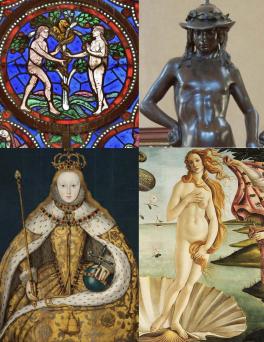
History of Art 3010 - Gender and Sexuality in European Art
Course Designer - Professor Karl Whittington, Instructor - TBD
ONLINE | Full Semester | Class #30084 | ASYNCHRONOUS
Course Designer - Professor Karl Whittington, Instructor - TBD
ONLINE | 7 Weeks, Session 2 | Class #37250 | ASYCHRONOUS
This course offers an introduction to the intersectional study of European Art, exploring the intertwining ideologies of gender, sexuality, race, and ethnicity from the Ancient Mediterranean World to the present. We will see that the ways artworks impact and construct ideas and stereotypes about gender, race, and sexuality in the modern world are deeply influenced by their development in premodern history. Topics to be explored include the ways in which ideas about gender roles and identities are shaped by artworks; the gendered contexts of artistic production; gendered practices of viewing works of art; the changing status of female and non-white artists and patrons in Europe; the way people of color were depicted in premodern European art; and queer and transgender artists and artworks. We will investigate the ways in which works of art enforced particular codes of behavior for people of different genders and races, but also how works of art served as sites of resistance to such roles and stereotypes, and as a place where individual identities were negotiated and portrayed. We will explore both famous works of European art and also lesser-known paintings, sculptures, buildings, and objects of visual culture.
GEN Foundations: Literary, Visual, and Performing Arts (LVPA) and Race, Ethnicity, and Gender Diversity (REGD)
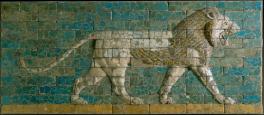
History of Art 3211 - Art and Civilization in Mesopotamia
Instructor Sarah Schellinger
IN PERSON | Class #35292 | TUE & THUR 3:55 - 5:15
Produced in the cradle of civilization, Mesopotamian art has a rich history of constructing monuments and creating objects that would provide insight into the lives of the people living during the advent of civilization. The aim of this course is to provide an overview of the major sites, structures, and artifacts throughout the greater Mesopotamian region from the beginning of the Neolithic revolution through the Parthian and Seleucid periods.
GEN Foundations: Literary, Visual, and Performing Arts (LVPA)
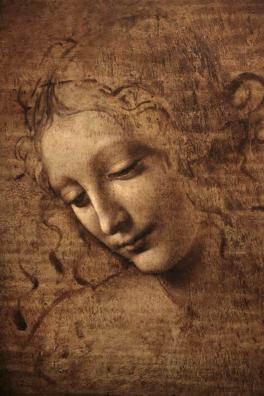
History of Art 3521 - Renaissance Art in Italy
Professor Kristen Adams
IN PERSON | Class #28234 | MON & WED 3:55-5:15
This course offers a panoramic introduction to the greatest artists and masterpieces of the Italian Renaissance from its beginnings in Florence through its triumph in Rome and Venice. After setting the stage with a brief overview of the art of the Late Gothic period in Italy, lectures will trace the revolutionary changes and global interests that transformed painting, sculpture, and the decorative arts in the 15th and 16th centuries. Special consideration will be given to the intersection of art and technology. Students will experience the Sistine Chapel and additional spaces in Virtual Reality and will examine how other modern technologies, when applied to Renaissance art, bring new insight to this remarkable period in history.
Image: Leonardo da Vinci, La Scapigliata, ca. 1506-08 (unfinished)
GEN Foundations: Literary, Visual, and Performing Arts (LVPA)

History of Art 3562 - Contemporary U.S. Latinx Art
Professor Carlos Rivas
IN PERSON | Class #36659 | WED & FRI 3:55-5:15
Survey of contemporary Latinx Art in the United States from its origins in the 1960s Civil Rights Movement through today. U.S. Latinx Art refers to the artistic, visual, and creative production emerging from Latinx communities in the context of diaspora after immigration from Latin America. This course will examine the visual arts created by communities with a multigenerational presence in this country, such as Mexican-Americans, Central Americans and Puerto Ricans, as well as newer arrivals. It treats works of art and activism across multiple media, from painting and sculpture to murals, photography, installation, experimental performance, posters, film, theatre, poetry, and artivism.
Image: Judy Baca, Migration of the Golden People, Mural, 2002. Central American Resource Center, Los Angeles, California.
GEN Themes: Migration, Mobility and Immobility (MMI) and Citizenship for a Diverse and Just World (CDJW)
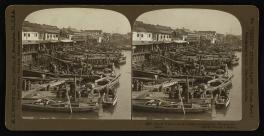
History of Art 3605 - East West Photography
Instructor Hannah Slater
IN PERSON | Class #35393 | LECTURE - TUES & THURS 5:20 - 6:15| +RECITATION - FRI 9:10-10:05 OR 10:20-11:15
This course surveys the role of photography in establishing and shaping global relations, with an emphasis on those between North America, Asia, and Europe. This course includes overviews of early types of cameras and critical writing about photography as a medium. Some of the topics that will be explored include photojournalism and art photography as well as representations of self, gender, and travel. This course also looks at urban and landscape photography, with special attention to how photography has historically been used as a tool for Colonialism. No prior experience in Asian art or photography is required.
GEN Foundations: Literary, Visual, and Performing Arts (LVPA) and Race, Ethnicity, and Gender Diversity (REGD)

History of Art 3901 - World Cinema Today
Instructor Mark Svede
IN PERSON | Class #19904| TUE & THUR 5:30-6:50
Course Designer - Professor Erica Levin, Instructor - TBD
ONLINE | Class #36443 | ASYNCHRONOUS
HistArt3901 examines feature films from around the globe that illustrate a range of forms and topics in recent cinema. Though this is a multi-national survey, we will consider films not only as representative examples of national cinema traditions but also as expressions of regional, ethnic, devotional, sexual, gendered and globalist identities. Rather than focusing on what particular films mean, we will study how filmmakers shape meaning, how viewers construct interpretations, why certain aesthetic choices can promote ideological perspectives and reveal underlying values.
GEN Foundations: Literary, Visual, and Performing Arts (LVPA)
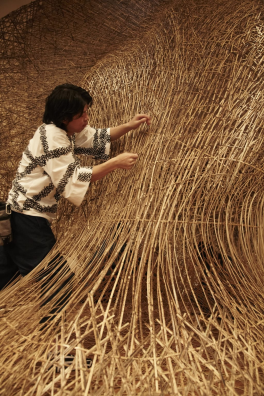
History of Art 4005 - An Introduction to Artistic Media and Techniques
Professor Christina Mathison
IN PERSON | Class #35291 | TUE & THUR 2:20-3:40
This course introduces students to the major media and techniques used in Asia throughout history. We will examine the process and techniques involved in the production of Bamboo, Ceramics, Drawing, Epigraphy, Ivory, Lacquer, Mandalas, Metals, Painting, Paper, Prints, Silk, Stone, Textiles, and Wood. Lectures and coursework will center around understanding the media and techniques of these art forms and analyzing the relationship between materials and meaning. The course will also involve the study of the limitations of some of these media and the approaches to conservation.
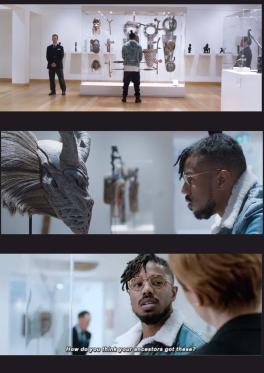
History of Art 4010 - An Introduction to the Methods and Theories of Art History
Professor Ujaan Ghosh
IN PERSON | Class #19905| TUE & THUR 11:10-12:30
The Course is intended for Art History Majors and other interested students to get acquainted with the fundamental theories and methods of art historical writing. Throughout the course, we will closely read some of the foundational texts that have influenced art historical writing over the past few centuries. We will look at how global movements— aesthetic, political, and sociological have shaped the ways in which historians have approached writings on art. At the same time, the course will attempt to decenter the overabundant theoretical gaze on European thought that dominates art historical methodology. At the end of this course, students should be able to engage with the multiple modalities of art historical thought and become more aware of the kind of art historian they want to become in the future.
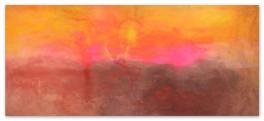
History of Art 4240 - Arts of the Black Atlantic
Professor Sam Aranke
IN PERSON | Class #36650 | TUE & THUR 9:35 - 10:55
Where is the Black Atlantic? What does it look, smell, taste, and feel like? How does it color our world? This class explores the visual and cultural history of the Black Atlantic—a phrase used to define the relationship between dissonant geographical locations that were forged into relationship with each other through the Transatlantic Slave Trade. We will forge an understanding of how vision, texture, touch, sound, and color owe their meanings through the Middle Passage and its production of arts of the Black Atlantic. Questions of justice and freedom are central to this course, and we will consider how artists envision their work as acts of civic service. Of particular focus will be how and why migration and mobility come to be contested terms for Black artists, critics, and activists.
Crucial to this class is the artwork of practitioners like Aaron Douglas, Romare Bearden, Josephine Baker, Aubrey Williams, AfriCOBRA, Frank Bowling, Wangechi Mutu, and Renee Green. We will focus primarily on the visual history and cultural impact of the Middle Passage as discussed through the writings of Afro-Caribbean, West African, Black American, and Black British scholars. We will work with concepts like “modern” visual forms, the afterlives of slavery, “the aesthetics of cool”, and the anticolonial imagination.
Image Caption: Frank Bowling, Texas Louise, 1971, Acrylic on canvas, 282 x 665 cm / 111 1/8 x 261 3/4 in., Rennie Collection, Vancouver, Pinault Collection
GEN Theme: Migration, Mobility and Immobility (MMI) IN
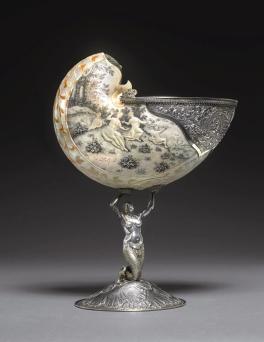
History of Art 4531 - 17th Century Art of the Netherlands
Professor Kristen Adams
IN PERSON | Class #35295 | MON & WED 2:20-3:40
This class will explore the economic, religious, and political transformations that occurred during the late sixteenth- and seventeenth century in Northern Europe. Students will consider how artists working in the Netherlands, Belgium, England, and France responded to those intersecting forces and created works that shaped and documented the cultures of their time. Students will learn about the impact of religious strife on artistic production; the emergence of capitalism and a flourishing art market; the development of new genres; the intersections between art and scientific inquiry; cultural encounters and colonial expansion. Throughout the semester we will engage in a close examination of celebrated paintings by Rembrandt, Vermeer, Rubens, Poussin, and their contemporaries, as well as architecture, prints, and the decorative arts to reconstruct the broader historical transformation of art, its production, and reception during this period.
Image: Cornelis Bellekin, Nautilus Shell with the Rape of Europa, 17th century
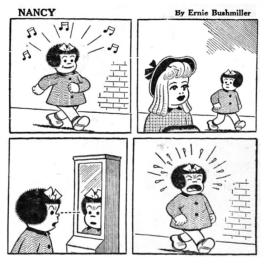
History of Art 4605 - Aspects of Modernity: the History of Comics in Europe and the United States
Instructor Peter Smyth
IN PERSON | Class #35300 | WED & FRI 3:55-5:15
This course examines the history of comics in Europe and the United States from the early 1800s to the present day. We will situate comics in their social and political context as we track their development across a variety of media, including newspaper comics, comic books, underground comix, graphic novels, and digital comics. We will develop a vocabulary for analyzing the formal strategies that comics use to make meaning. Of special interest for this course is the changing relationship between comics and the fine arts.
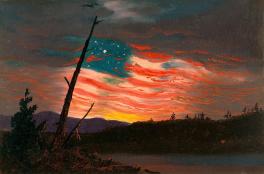
History of Art 4630 - Inventing the Americans: The Art of Citizenship, Nationhood, and Democracy, 1776-1900
Professor Jody Patterson
IN PERSON | Class #35298 | TUE & THUR 3:55-5:15
This course is concerned with how citizenship, nationhood, and democracy were constituted in and through works of art from the founding of the United States in the late 18th century, through the nation’s rise to global dominance by the turn of the 20th century. We will look at a range of artworks — including painting, sculpture, print, and photography — with a view to understanding how the nation, its citizens, and differing approaches to democracy were made visible (or rendered invisible) in culture. What do these artworks say about national identity and historical memory? How do they convey a common set of ideals and values that create an overarching sense of unity and identity in American society? Conversely, how and why do different social groups contest certain artworks or visual representations? Unifying themes in this course include the implications of geographical and political redefinition of the United States through Westward expansion and imperialism, processes of economic and social modernization, and the shifting definitions of what it meant to be an “American,” who counted as a “citizen,” and how democracy was pictured for different audiences.
GEN Themes: Citizenship for a Diverse and Just World (CDJW)
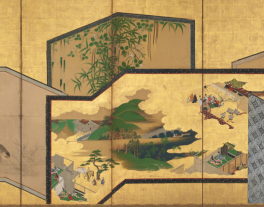
History of Art 4820 - The Arts of Japan
Instructor Hannah Slater
IN PERSON | Class #35296 | TUE & THUR 12:45-2:05
This course is an introduction to the visual arts of Japan from prehistory up to 1868. It offers a wide overview of materials, formats, and means of making, from architecture and interior design to sculpture, ceramics, painting, textiles, and woodblock prints. This course examines representations of foundational narratives, court culture, gender, nature, and nation. Special attention is given to the impact of Shinto and the transmission of Buddhism in establishing visual traditions. No prior experience in art history or Japanese art is required.
GEN Foundations: Literary, Visual, and Performing Arts (LVPA)

History of Art 5422 - Medieval and Renaissance Manuscript Illumination
Professor Karl Whittington
IN PERSON | Class #35301-UG OR #35302-G | WED & FRI 9:35-10:55
This course will focus on the production and reception of manuscript drawings, illuminations, diagrams and maps in Western Europe from seventh to fifteenth centuries. We will investigate what kinds of visual materials were produced for different types of books (Psalters, Gospels, scientific treatises, etc.), how these images related to the texts around them, and what purposes this visual material served within medieval and early Renaissance culture. Rather than a comprehensive survey, this course selects individual case studies of illuminated manuscripts to probe how these books were used and interpreted by their readers. The course also highlights the current scholarly debates and trends within the art-historical examination of medieval manuscripts. This is a research-intensive course. It will include numerous visits to Thompson Library Special Collections, where we will engage directly with original medieval books and manuscript fragments. Students will work throughout the semester on an original research project on an original manuscript in OSU Special Collections.
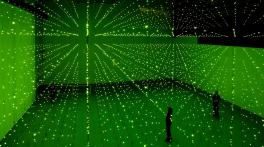
History of Art 5643 - New Media Art and Theory
Professor Kris Paulsen
IN PERSON | Class #36168-UG or #36167-G | WED & FRI 2:20-3:40
This course will explore the intersections of art and technology from aesthetic, philosophical, and political vantage points. We will immerse ourselves in the strange borderlands between art and engineering, looking to how artworks can help us understand and critique the ways in which new media and increasing mediation have affected perception, communication, and our understanding of our bodies and their boundaries. We will develop a visual and verbal vocabulary for analyzing “new media” in the 20th and 21st century in its many forms, practices, and materials, focusing on early and contemporary experiments with Virtual Reality, Artificial Intelligence, algorithmic and generative art, bio-art, and networked art.
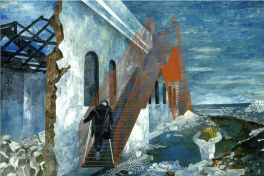
History of Art 8601 - Modern Art Despite Modernism (and the Other Side of American Painting)
Professor Jody Patterson
IN PERSON | Class # 35396 | FRI 2:15-5:00
This seminar considers artists working during the turbulent years surrounding World War II, a pivotal moment in the United States whose history continues to resonant in our own era. Marked by profound upheaval and uncertainty—the dawn of the nuclear era, the advent of the Cold War, McCarthyism, the retrenchment of Jim Crow, heightened racial tensions, and a paranoid cultural climate of social and political “containment”—the art of this period was riven with tensions and contradictions. With a view to expanding what counts as “modern” in American art, a central aim of this class is to overcome clichéd stylistic polarities that position realism and modernism on opposing ends of aesthetic and ideological spectrums. Instead, we will explore the surprising heterogeneity of modern American art at mid-century. In addition to the well-known ascendency of gestural abstraction and formalist aesthetics, we will examine artists who dexterously engaged modernist visual strategies, but who refused to sacrifice content and the potential for communication with a popular audience, choosing the imperatives of humanism over formalism. Considering artists such as Jackson Pollock, Lee Krasner, Ad Reinhardt, and Willem de Kooning, alongside Ben Shahn, Alice Neel, Jacob Lawrence, and Norman Lewis, we will examine the degree to which—despite the obstinacy of canonical conceits—these diverse practices affirm that art can be emphatically modern without being modernist, and not all realisms are intrinsically reactionary.
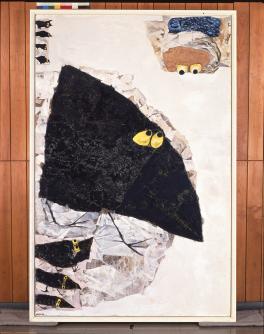
History of Art 8821 - Modern and Contemporary Art in Japan
Professor Namiko Kunimoto
IN PERSON | Class # 27848 | THUR 2:15-5:00
This advanced seminar will focus on the critical themes of urbanization, gender, trauma theory, individualism and collectivism, center-periphery models, and the discursive relation between the global and the national. We will consider when the postwar begins and ends, what “Japanese art” means today, and how Japanese artists have absorbed, influenced, and critiqued American art. Our investigations will include diverse media such as painting, performance art, anti-art, manga, assemblage, calligraphy, and illustration. Japanese reading ability is not a requirement.
